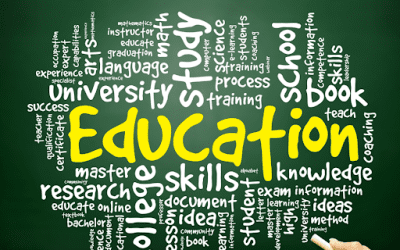Colleges encounter stoppages as new variants or other emergencies emerge. The challenges force colleges to move to emergency remote learning. Often, these courses lack the best modalities and effectiveness of well-designed, online classes. Now, colleges have emergency remote learning (ERL) content, which can be converted or repurposed for online learning. Additionally, these courses could be prepared for future situations, using hybrid learning. With these five steps, college leaders could pivot these ERL courses, producing successful online learning and preparing their colleges for hybrid learning.
1.) Assess the Value of the Emergency Remote Learning Course
Therefore, provosts and COOs collaborate with their faculty teams to assess courses created from ERL content. They consider these questions: What elements should be changed? Which components can be improved? Why is it feasible to redo the course? Many courses moved from face-to-face instruction to online, so they might not be valuable. Planning online learning takes months or years; therefore, college leaders can replan these courses. By assessing the course’s elements, leaders decide if the class can be converted to online or hybrid coursework. Technology is also a key attribute.
2.) Review the Technology in ERL Content to Pivot Them to Online Learning
Besides that, higher-ed leaders review the technology for ERL courses. Thus, many technical aspects for content lacked quality because of the quick move. Instructors experienced technology issues because they lacked the proper equipment and training to make and present content. What technologies help professors to create content or display it? By creating or purchasing a video delivery system, universities support their faculty. A video delivery system assists professors in broadcasting videos live or recording videos for in-class lectures. Also, colleges bought hotspots to improve the accessibility for students. These technologies prepare a college for hybrid learning. Most importantly, colleges train instructors on how to use the technology.
3.) Provide Training for Faculty to Pivot ERL to Online Learning
Before the pandemic, many instructors did not teach online courses. Thus, teachers need training with technology, course design, and a presentation. For example, provosts create professional training on how to effectively use video lectures or just how to use video equipment correctly for a class. For 24 years, the University of Central Florida (UCF) produced online courses. The college creates faculty seminars, professional development, and a site to connect faculty members and instructional designers. They offer brief, 2 to 4-hour courses on Zoom Essentials and Panopto Essentials to help instructors quickly build synchronous and asynchronous instruction. Leaders review course design too.
4.) Evaluate the Course Design
Online provosts review emergency remote learning content for design. With low-quality content, many courses demonstrated poor design to support student outcomes. Leaders form teams of faculty members and instructional designers to review content. As stated, developing online learning takes months and sometimes years. Thus, leaders scrutinize materials for learning goals and if the content promotes real-world experiences. Teams review assessments to encourage research rather than memorization. They evaluate the course navigation to understand if it is user-friendly to ensure students are not “over-clicking” for a step.
5.) Collaborate or Hire an Outside Vendor to Pivot to Online Learning
Some colleges lack time and resources to review ERL content. Besides that, some professors might feel uncomfortable working with an instructional designer (ID) to rethink or redo a course. This perspective is especially true if the professor taught a course a certain way for many, many years. Some colleges lack IDs to repurpose the content. Working with an outside vendor presents a good choice to rework, improve, or make new content. Thus, the outside vendor assesses the course needs and employs a team of IDs to revise ERL content for online and hybrid learning.
To sum up, college leaders examine ERL content, so it can be pivoted to effective online learning. Therefore, they review technology and the course design of ERL content. Training faculty to teach online courses and utilize online learning tools prepare them and the college for future situations. Additionally, the review helps colleges to build a hybrid model from converted ERL content. On February 17, 2022, A Pass Educational will be presenting a webinar on HelpingHigher Ed Leaders Move Beyond Emergency Remote Learning. Brandi Robinson and Meghan Garfield will lead this discussion.




